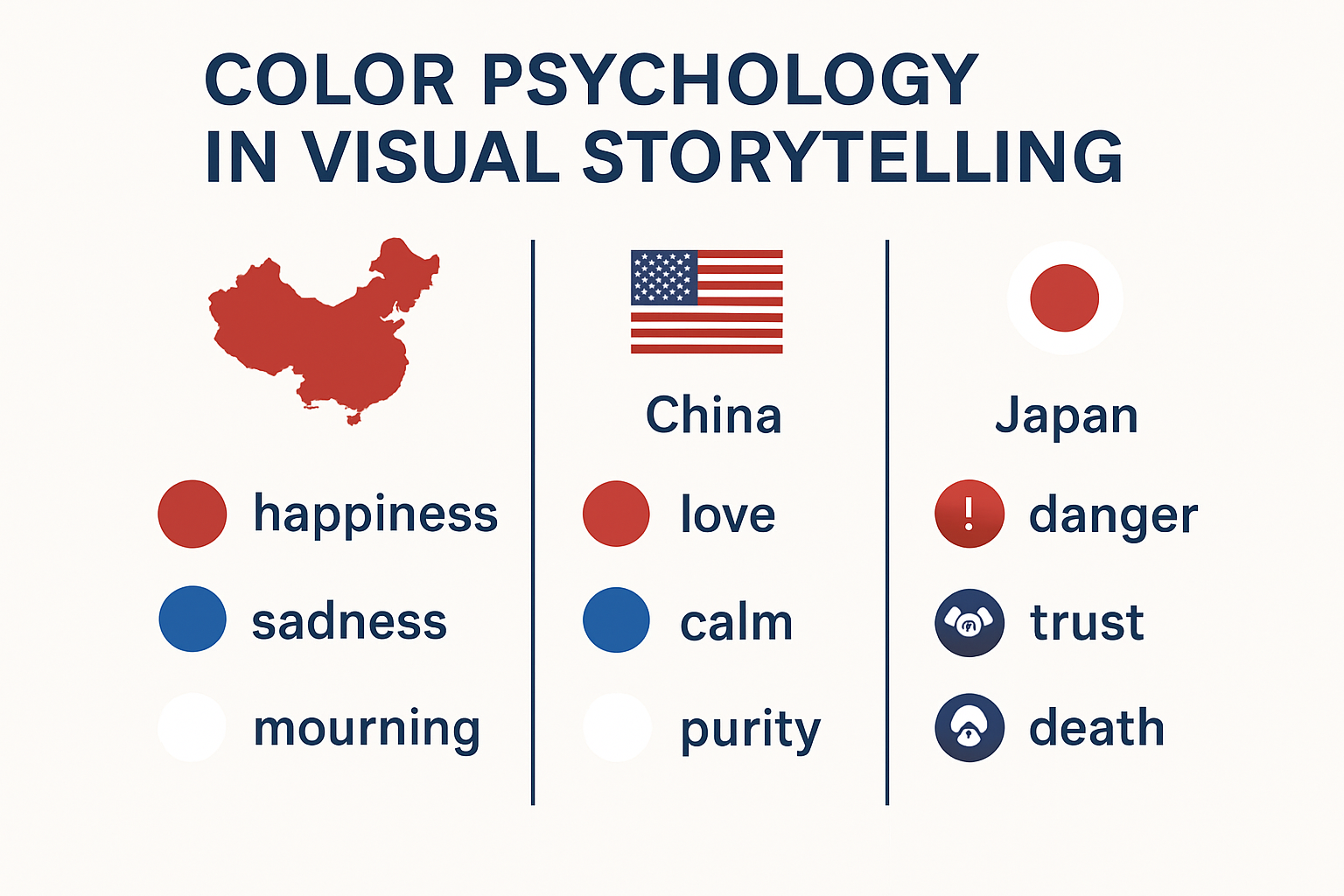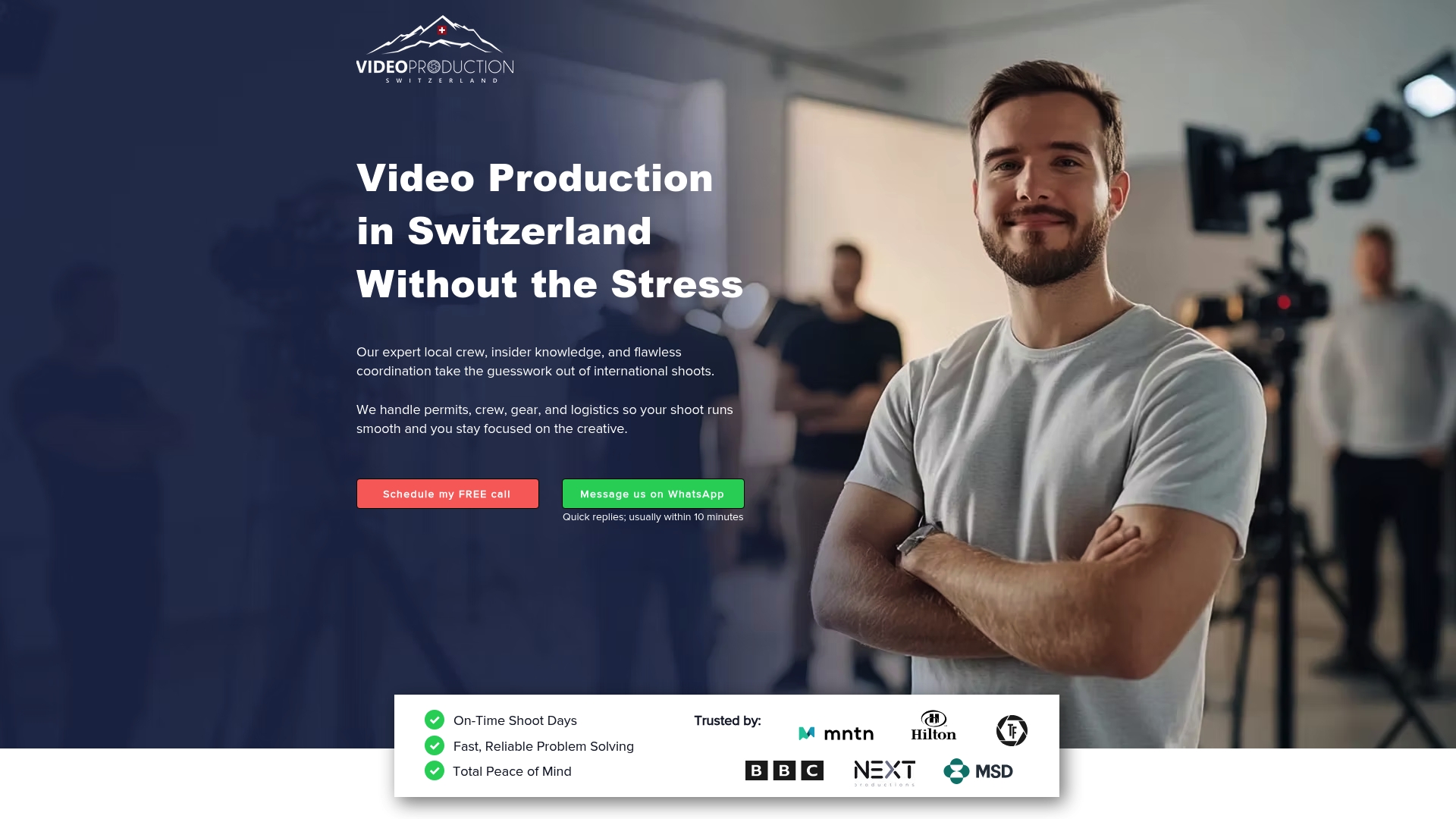Master Visual Storytelling Techniques for Global Impact
- info1419758
- Aug 16
- 9 min read

Visual storytelling is everywhere, shaping how we see brands, share ideas, and connect across borders. Scientists found that our brains process visuals up to 60,000 times faster than words. Here is the plot twist. The real secret is not flashy design or high budgets. What makes a story unforgettable is how it feels in your gut and how it reaches across cultures without a single word.
Table of Contents
Quick Summary
Takeaway | Explanation |
Visual storytelling engages emotions quickly | Visual narratives connect deeply with audiences, leveraging our brain’s quick processing of images. |
Cultural sensitivity is essential in storytelling | Understanding cultural contexts allows for more authentic and impactful visual communication across diverse audiences. |
Color choices influence emotional responses | Colors evoke specific feelings and help convey nuanced messages effectively in visual narratives. |
Establish a strong narrative framework for brands | Brands should create cohesive visual stories that reflect their core values, ensuring consistent messaging across platforms. |
Utilize non-verbal cues for universal connection | Non-verbal strategies enhance understanding, making visual stories resonate regardless of language barriers. |
Understanding the Power of Visual Storytelling
Visual storytelling transcends traditional communication methods by transforming complex ideas into compelling narratives that resonate across cultural boundaries. This powerful technique harnesses the human brain’s innate ability to process visual information exponentially faster than text, creating immediate emotional connections and deep understanding.
The Neurological Impact of Visual Communication
Research from the National Institutes of Health reveals the profound neurological mechanisms behind visual storytelling. Our brains are wired to process images with remarkable speed and emotional depth. When audiences encounter a well-crafted visual narrative, multiple neural pathways activate simultaneously, triggering stronger memory retention and more profound emotional engagement compared to text-based communication.
The cognitive science behind visual storytelling demonstrates that images can communicate complex concepts instantaneously. A single powerful image can convey nuanced emotions, cultural contexts, and intricate narratives that might require paragraphs of written explanation. This universal language allows storytellers to bridge communication gaps across diverse global audiences, making visual techniques an essential tool for international brands and creative professionals.
Emotional Connectivity Through Visual Narratives
Visual storytelling operates on a fundamental psychological principle: humans are inherently emotional beings who connect through shared experiences. By strategically designing visual sequences that evoke genuine emotional responses, storytellers can create immersive experiences that transcend linguistic and cultural barriers.
Effective visual storytelling goes beyond mere aesthetic appeal. It requires a deep understanding of human psychology, cultural sensitivities, and narrative structures that can elicit specific emotional responses. Successful visual communicators craft narratives that feel authentic, relatable, and meaningful to their target audiences.
Global Communication Through Visual Language
In an increasingly interconnected world, visual storytelling emerges as a universal communication tool. Professional visual storytellers understand that images carry intrinsic cultural meanings that can be strategically leveraged to create meaningful cross-cultural connections. By thoughtfully selecting visual elements that resonate across different cultural contexts, creators can develop narratives that feel simultaneously global and intimately personal.
The power of visual storytelling lies in its ability to simplify complexity, evoke emotions, and create shared understanding. Whether used in marketing, documentary filmmaking, brand communication, or artistic expression, these techniques offer a transformative approach to global communication.

For professionals seeking to master these techniques, our guide on video production best practices provides comprehensive insights into creating compelling visual narratives that make a lasting global impact.
Essential Visual Storytelling Techniques Explained
Mastering visual storytelling requires a strategic approach that combines technical skills, creative insight, and deep understanding of narrative principles. Professional storytellers leverage multiple techniques to transform ordinary visual content into compelling global communication experiences.
To help you easily compare the core visual storytelling techniques discussed, here’s a summary table outlining each technique and its primary function in effective storytelling:
Technique | Main Purpose |
Composition and Framing Strategies | Direct viewer attention and establish visual hierarchy |
Color Psychology and Emotional Mapping | Evoke specific emotions and communicate mood |
Narrative Sequencing and Visual Flow | Ensure smooth progression and emotional momentum |
Non-Verbal Communication Strategies | Cross language barriers through universal expressions |
Inclusive Visual Representation | Honor diversity and provide authentic connections |
Cultural Context and Symbolic Understanding | Adapt visuals to respect different cultural meanings |
Composition and Framing Strategies
Research from the MIT Media Lab demonstrates that composition is the foundational language of visual storytelling. The way elements are arranged within a frame significantly influences audience perception and emotional response. Professional visual storytellers utilize specific compositional techniques like the rule of thirds, leading lines, and strategic negative space to guide viewer attention and create visual hierarchy.
To clarify how key compositional and framing choices shape audience perceptions in visual storytelling, the following table summarizes several techniques and their typical psychological impact:
Framing/Composition Technique | Typical Impact on Audience |
Rule of Thirds | Balances frame and draws eye to key points |
Leading Lines | Guides viewer’s focus through the scene |
Negative Space | Emphasizes subject, creates mood |
Low-Angle Shot | Conveys power or dominance |
High-Angle Perspective | Suggests vulnerability or weakness |
Advanced framing techniques involve understanding how different camera angles and perspectives communicate psychological states. A low-angle shot can make a subject appear powerful and dominant, while a high-angle perspective might suggest vulnerability or diminished status. These nuanced visual choices allow storytellers to communicate complex emotional narratives without relying on dialogue or explicit explanation.
Color Psychology and Emotional Mapping
Color is a powerful narrative tool that communicates mood, cultural context, and emotional subtext. Psychological research from the Color Research Society reveals that different color palettes trigger specific neurological and emotional responses across diverse cultural contexts. Warm tones like red and orange can evoke energy and passion, while cool blues and greens might communicate calmness and introspection.
Successful visual storytellers develop sophisticated color mapping strategies that align chromatic choices with narrative objectives. This involves understanding not just individual color meanings, but how color interactions create complex emotional landscapes. By thoughtfully selecting and combining colors, creators can subtly guide audience emotional experiences without explicit verbal communication.

Narrative Sequencing and Visual Flow
Effective visual storytelling transcends individual images and focuses on creating seamless narrative progression. This requires understanding how visual elements connect and communicate across sequences. Professional storytellers design visual narratives that maintain consistent rhythm, create smooth transitions, and build emotional momentum.
Narrative sequencing involves strategic choices about shot selection, scene duration, and visual continuity. Each visual element must serve the broader storytelling purpose, whether revealing character development, building tension, or communicating complex thematic ideas. The goal is creating a visual language that feels intuitive and emotionally resonant.
For professionals seeking deeper insights into crafting compelling visual narratives, our comprehensive guide to video production techniques offers advanced strategies for transforming visual content into powerful storytelling experiences.
Adapting Storytelling for Diverse Global Audiences
Creating visual narratives that resonate across different cultural landscapes requires sophisticated understanding and strategic approach. Global storytellers must navigate complex communication challenges while maintaining authentic and meaningful connections with diverse audiences.
Cultural Context and Symbolic Understanding
Cross-Cultural Communication Research from Stanford University reveals that visual symbols carry dramatically different meanings across cultural contexts. What represents positivity in one culture might signify negativity in another. Professional visual storytellers must develop deep cultural intelligence to interpret and utilize visual language effectively.
Understanding cultural nuances involves more than surface-level awareness. It requires comprehensive research into symbolic representations, gestural communication, color psychology, and non-verbal communication patterns specific to different cultural groups. Successful global storytellers invest significant time studying cultural semiotics to create narratives that feel authentic and respectful.
Non-Verbal Communication Strategies
Anthropological Studies from the University of California demonstrate that non-verbal communication represents over 70% of human interaction. Visual storytellers must master techniques that transcend linguistic barriers, focusing on universal emotional expressions and narrative structures that communicate across cultural boundaries.
This approach involves developing visual language strategies that rely on fundamental human emotional experiences. Storytellers create narratives centered on shared human experiences like love, struggle, joy, and transformation. By focusing on these universal themes, creators can develop visual stories that feel simultaneously local and globally relevant.
Inclusive Visual Representation
Inclusive storytelling goes beyond mere representation. It requires thoughtful, nuanced approaches that honor cultural diversity while creating genuine connections. Professional visual storytellers must challenge existing narrative stereotypes and develop more sophisticated, respectful visual communication methods.
This involves deliberate choices about casting, visual metaphors, narrative perspectives, and cultural authenticity. Successful global visual storytellers collaborate directly with cultural representatives, ensuring their narratives avoid problematic stereotypes and provide genuine, multidimensional representations.
For creative professionals seeking deeper insights into crafting culturally sensitive visual narratives, our comprehensive international production guide offers advanced strategies for global storytelling approaches.
Integrating Visual Storytelling Into Brand Strategies
Modern brands recognize visual storytelling as a critical communication strategy that transcends traditional marketing approaches. By transforming corporate messaging into compelling narratives, organizations can create deeper emotional connections with global audiences and differentiate themselves in increasingly competitive markets.
Strategic Brand Narrative Development
Research from ResearchGate reveals that successful brand visual storytelling requires a systematic approach to narrative construction. Brands must develop cohesive visual strategies that communicate core values, mission, and unique value propositions through carefully crafted visual experiences.
This process involves identifying key brand archetypes, understanding audience psychological triggers, and designing visual sequences that authentically represent organizational identity. Successful brand storytellers create narrative frameworks that remain consistent across different media platforms while allowing subtle adaptations for diverse cultural contexts.
Visual Identity and Emotional Resonance
Effective brand visual storytelling goes beyond aesthetic design. It requires a profound understanding of how visual elements communicate emotional experiences and create meaningful audience connections. Colors, composition, movement, and visual metaphors become powerful tools for expressing brand personality and creating memorable audience interactions.
Professional brand strategists develop comprehensive visual language systems that translate abstract organizational values into tangible visual experiences. This involves creating visual guidelines that ensure consistency while allowing creative flexibility across different communication channels and cultural contexts.
Cross-Platform Visual Narrative Strategy
In the digital age, brands must develop sophisticated visual storytelling approaches that function seamlessly across multiple platforms. This requires creating adaptable visual narratives that maintain core messaging while adjusting to different media environments such as social platforms, websites, video content, and traditional advertising channels.
Successful cross-platform strategies involve developing modular visual storytelling frameworks that can be dynamically reconfigured without losing essential brand communication objectives. Professional brand communicators design visual assets that can be efficiently repurposed, ensuring maximum narrative impact with minimal resource investment.
For creative professionals seeking advanced insights into developing compelling brand visual narratives, our comprehensive video marketing trends guide provides cutting-edge strategies for modern brand communication.
Frequently Asked Questions
What is visual storytelling and why is it important?
Visual storytelling is the use of images, videos, and graphics to convey information or narratives. It is important because it engages audiences quickly, evokes emotions, and can simplify complex ideas, making communication more effective across cultures.
How can I improve my visual storytelling techniques?
Improving visual storytelling techniques involves mastering composition, understanding color psychology, and developing a strong narrative flow. It is also essential to adapt visuals to cater to different cultural contexts and ensure they resonate with diverse audiences.
What role does color play in visual storytelling?
Color plays a crucial role in visual storytelling as it can evoke specific emotions, set the mood, and communicate cultural meanings. Understanding color psychology is vital for creating impactful visual narratives that resonate with the audience’s emotional responses.
How can brands effectively integrate visual storytelling into their strategies?
Brands can integrate visual storytelling by developing cohesive narratives that reflect their core values, utilizing strong visual identities, and creating adaptable content that functions across multiple platforms. This helps establish a deeper emotional connection with audiences while maintaining consistent messaging.
Take the Stress Out of Global Visual Storytelling in Switzerland
Bringing your visual storytelling to a global audience means more than mastering composition and color. Success hinges on flawless execution, seamless logistics, and trusted on-the-ground partners who understand the unique demands of high-impact video. If you want your next production in Switzerland to resonate emotionally, connect across cultures, and stay on schedule, you need more than just creative talent. You need a team who can handle permits, location scouting, equipment, and all the moving parts that keep your story flowing.

Let your team focus on creative excellence while our local experts handle every production detail behind the scenes. Visit Video Production Switzerland to see how we help international filmmakers and brands avoid stressful coordination, thanks to our 20+ years of market knowledge and reliable logistics. Ready to transform your visual stories into global successes without the headaches? Start with a free consultation through our homepage today and experience seamless production management built for creative impact.
Recommended

Comments